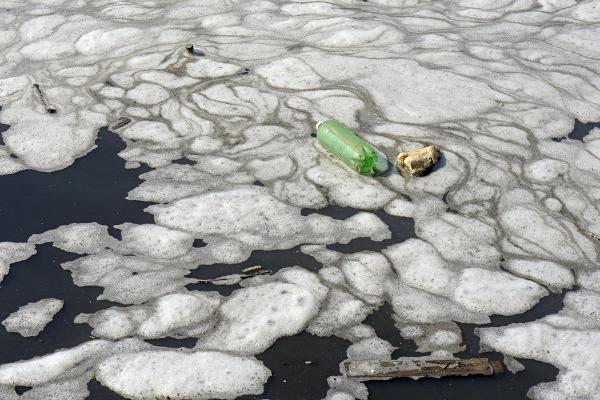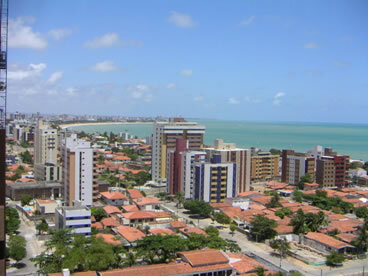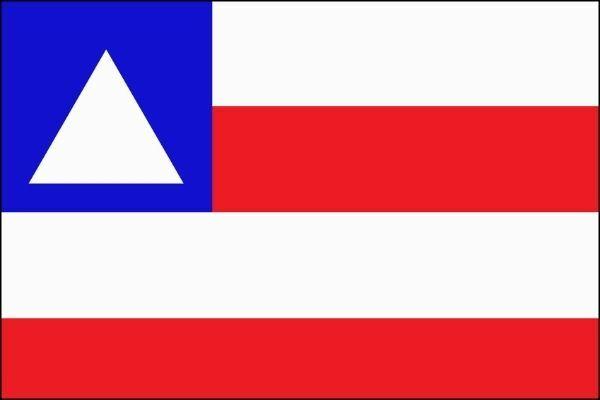At watersheds of Brazil are extensive and formed by mighty rivers and important for their respective regions, making the country have the largest fresh/drinking water reserve on the planet. It is important to remember that watersheds consist of a large area where a main river is fed by other rivers around it, the tributaries.
The Brazilian basins are as follows:
Amazon Hydrographic Basin;
Tocantins-Araguaia Hydrographic Basin;
São Francisco River Basin;
Platinum Basin (Paraná, Paraguay and Uruguay Basin);
Parnaíba Hydrographic Basin;
East North East Atlantic Watershed;
Western Northeast Atlantic Hydrographic Basin;
East Atlantic Hydrographic Basin;
Southeast Atlantic Hydrographic Basin;
South Atlantic Hydrographic Basin;
Read too: Alter do Chão Aquifer – considered the largest in available water volume
What is a watershed?
At watersheds they are formed by a main river, its tributaries and sub-affluents, that is, the smaller rivers that feed the tributaries. In general, several basins around the world have only one feeding regime for their rivers, the
rain regime, that is, rainwater. However, in some regions, we have the nival regime (snow), with meltwater from the mountains feeding a large part of the water system in the basins.When there is both a pluvial and a Nival regime, we usually say that there is a mixed regime. In Brazil, the Amazon river has this regimen, as it is fed with the rains and with the melting of the Andean mountains in Peru, the location of the source of that river.
A watershed is bounded by relief that is around you, which is constantly sculpted by the waters of rivers. In addition to the relief, vegetation can also be a dividing factor. between one basin and another. The basins can flow into the sea, underground and/or lakes.
Brazil's hydrographic basins
Located in a privileged area of water resources, the Brazil owns 12% of all fresh/drinking water available on Earth. Our water system comes from three areas:
the Andes Mountains, with the source of the Amazon River;
the Brazilian Central Plateau, with the rivers of the Platina and São Francisco basins, in addition to the rivers on the right bank of the Amazon;
the Guianas Plateau, which concentrates the sources of the tributaries on the left bank of the Amazon.
Check out the main features of all Brazilian basins. They were defined in accordance with the guidelines of the Brazilian Institute of Geography and Statistics (IBGE), the National Water Resources Council (CNRH) and the National Water Agency (ANA), bodies responsible for territorial administration and Brazilian water resources.

Amazon Hydrographic Basin
THE largest hydrographic basin in the country and the world it has a drainage area of 5.8 million km², supplying the population that lives in an area of almost 7 million km². Within Brazil, the Amazon Basin comprises the following states:
Acre;
Amapá;
Amazons;
Roraima;
Rondônia;
Mato Grosso;
For.
However, it is not exclusively Brazilian, feeding some neighboring countries, such as:
Peru;
Bolivia;
Colombia;
Ecuador;
Guyana;
Venezuela.
Do not stop now... There's more after the advertising ;)
Its main river, the Amazon, receives three names along its course.. In Peru, where the source is located, it is called Marañon River, so called in the other Andean countries where it runs. When he enters Brazil, he receives the name of Solimões River. Upon reaching the waters of the Rio Negro, becomes the Amazon, considered by many to be the longest river in the world.
Tocantins-Araguaia Hydrographic Basin
Considering the largest basin in Brazilian territory, a Tocantins-Araguaia Basin it has an area of more than 800 thousand km², with highlights for the two main rivers. O RiverAraguaia has its source in Mato Grosso and is the natural border between that state and Goiás. During the winter, it decreases its flow, forming beautiful beaches, which are frequently visited during the aforementioned period.
O Tocantins river it has its source in Goiás, in the extreme north of the state, and receives the waters of the Araguaia River on the border with Tocantins (state). Together with their tributaries and sub-affluents, these rivers feed 7.5% of the national territory in the following states:
Federal District;
Goiás;
Maranhão;
Mato Grosso;
Tocantins;
For.
See too: Environmental impacts caused by mining
São Francisco Hydrographic Basin
Its main river is the San Francisco. It is born in Minas, in Serra da Canastra, and runs from south to north. is a river of extreme importance for the Raegean Neast, because during the dry season, it feeds several dams, contributing to the survival of the backwoodsman (the man from the sertão) during the most critical periods.
Its drainage capacity reaches the following states:
Alagoas;
Bahia;
Minas Gerais;
Pernambuco;
Sergipe (where its mouth is, on the border with the Bahian territory).
Among the controversies surrounding the Old Chico, as the river is popularly known in the regions through which it passes, is thetransposition for inland areas, a project that began in 1985 and has continued to the present day.
Paraná, Paraguay and Uruguay Hydrographic Basin – Platinum Basin
That set of river basinss can be one of the most important for the country in economic terms, as it is located in a region that is considered the richest in Brazil, in addition to being home to the biggest hydroelectric power plant in the world, the Itaipu Plant, on the border with Paraguay, in the state of Paraná.
The Paraná River has as its main tributaries the Rio Grande and the Rio Paranaíba, in addition to being the natural border with Paraguay and Argentina, at the mouth of the Iguaçu River. Its course has several unevenness and waterfalls, which makes the Paraná Basin essentially from plateaus. As a result, there is great hydroelectric potential, which favored the implementation of the Itaipu Power Plant.
![Foz do Iguaçu Falls, in Paraná. [1]](/f/5dcedbbab14ef2635c6a40b041eff0d2.jpg)
THE Paraguay River basin is basically from flat land, being widely used for navigation and production flow from the three countries bathed by this river:
Argentina;
Brazil;
Paraguay.
O Uruguay River, also present in Santa Catarina and Rio Grande do Sul, has great hydroelectric potential, in addition to being useful for Brazilian, Uruguayan and Argentine farmers.
Parnaíba Hydrographic Basin
Present in the Brazilian Northeast, this basin has three states:
Ceará;
Maranhão;
Piauí.
Its location makes many rivers flashing, that is, they dry out in the dry season. The main river that gives its name to this basin receives water from several tributaries, such as the Piauí River and the Balsas River.
East North East Atlantic Watershed
ANA considered the basin with the lower water availability in the country, is present in the following states:
Piauí;
Ceará;
Large northern river;
Paraíba;
Pernambuco;
Alagoas.
Due to the arid and semiarid climate, it has many intermittent rivers, highlighting the Jaguaribe River, the largest intermittent river in the world.
Western Northeast Atlantic Hydrographic Basin
With three biomes present in your area – thick, Caatinga and Amazon –, this basin occupies 3% of Brazil, in the Maranhão and far east of Pará. The Itapicuru, Grajaú and Pindaré rivers are the main contributors to this basin.
Read too:Cerrado: Brazil's water tank
East Atlantic Hydrographic Basin
This basin is formed by rivers that depart from Espírito Santo towards the Brazilian Northeast, including:
Minas Gerais;
Holy Spirit;
Bahia;
Sergipe.
As a highlight, there are the Pardo and Jequitinhonha rivers, the latter being an important resource for the population of northern Minas Gerais, an area of extreme poverty due to the landscape and arid climate. Among the Brazilian hydrographic basins, it has the second smallest water reserve in the country..
![Fisherman in Simões Filho, Bahia. [2]](/f/0459299d7af8e68792c339b5d159379e.jpg)
Southeast Atlantic Hydrographic Basin
One of the smallest basins in terms of occupied area, with 2.5% of the national territory. Due to its location, it features high demographics, as it houses the following states:
Minas Gerais;
Holy Spirit;
Rio de Janeiro;
Sao Paulo;
Paraná.
As prominent rivers, we can mention the Rio Paraíba do Sul and the Rio Doce, used for the industries of the Southeast and mining companies in the state of Minas Gerais, respectively.
South Atlantic Hydrographic Basin
This basin has great tourist importance, sheltering:
Sao Paulo;
Paraná;
Santa Catarina;
Rio Grande do Sul (with more emphasis).
The highlight is the Guaíba River, which supplies Porto Alegre and adjacent areas.
Importance of hydrographic basins for Brazil
It is said that Brazil has a great water privilege due to the amount of rivers and aquifers (groundwater) existing in our territory. In fact, it is a privilege to have all this wealth while some regions of the world suffer from drought and processes of desertification of landscapes.
However, all this wealth, if mismanaged or poorly cared for, can end up becoming exhaustible and unfit for consumption. Having great availability of water in the territory means having great responsibility in the care of this water, which is such a vital natural resource for the survival of human beings.
It is essential that the water resources are managed efficiently and responsibly, with planning to ensure the continuity and cleanliness of the courses of the rivers. Basic sanitation policies, combating pollution, reducing fertilizers and pesticides that contaminate the ground and population awareness campaigns on water consumption must be carried out with rigor and attention.

For some time, there was a consensus that water was an infinite, inexhaustible resource. But we know that this is not true, which awakens in civil society and public authorities the need to protect areas of water sources, springs and riparian forests in order to preserve this resource so necessary for the development of life.
solved exercises
Question 1 - (UEM) About the water resources of Brazil and its problems, check what is CORRECT.
01. Brazil is among the best endowed countries in terms of water resources, in which Russia and Canada also stand out.
02. The availability of water in Brazilian territory is uneven, with the North region being the best served and the Northeast region, whose interior is marked by a semiarid climate, being the most deprived.
04. Even with problems such as deforestation, which leave soils unprotected, accelerating leaching, erosion and siltation of water courses, the methods mining explorations with water pollution, among other factors, no Brazilian region or urban region will have problems in terms of quantity and water quality.
08. In northeastern Brazil, the semiarid climate makes the soil permeable, causing the frequent intermittence of rivers; but the existence of underground aquifers partially alleviates the problem of water availability in the region.
16. Altogether, the North and West of the country have resources far superior to those of the Center-South, which is the most populated portion of the Brazilian territory.
Sum ( )
Resolution
27
Only item 4 is incorrect, as all Brazilian regions can suffer from water problems. The difference is the intensity of the problem, as some regions may feel it more intensely than others.
Questions 2 - (UFTM) Note the statements:
I. The Brazilian hydrographic network used for navigation is unequally distributed throughout the country, with the greatest navigable potential being located peripherally to the more advanced economy areas.
II. In Brazil, the rivers with the best natural conditions for navigation are the Amazon and Paraguay, as well as the middle valley of the São Francisco River.
III. The Tietê, Grande and Paranaíba rivers are tributaries of the Paraná River and bathe important highly industrialized regions of Southeastern Brazil.
IV. Most Brazilian rivers are intermittent, except those located in the northeastern hinterland, which are temporary due to the irregular rainfall of the climate.
V. The so-called Triângulo Mineiro comprises the region limited by the Paraíba and Grande rivers, and borders the states of Goiás and São Paulo.
Is CORRECT contained only in
A) I and II.
B) I and III.
C) II and IV.
D) III and V.
E) IV and V.
Resolution
Alternative A. Most Brazilian rivers are perennial, or permanent, and not intermittent. In addition, the Rio Paraíba is a northeastern river in the state of the same name. There may be confusion with the Paraíba do Sul River, which is located in Southeastern Brazil.
Image credit
[1]Vinicius Bacarin / Shutterstock
[2] Joa Souza / Shutterstock
By Attila Matthias
Geography teacher


